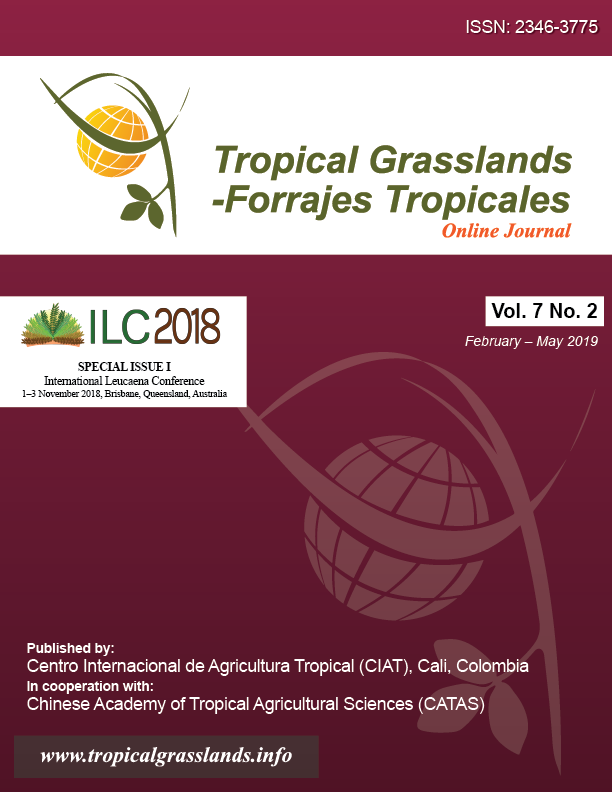Strategies to breed sterile leucaena for Western Australia
DOI:
https://doi.org/10.17138/tgft(7)80-86Abstract
Keynote paper presented at the International Leucaena Conference, 1‒3 November 2018, Brisbane, Queensland, Australia.
Strategies to breed sterile leucaena for Western Australia include plant breeding and biotechnology tools to generate sterile lines at both the tetraploid and triploid ploidy levels. For tetraploids, the main target species is the commercial Leucaena leucocephala, that is well known for its potential as a high-quality, productive and persistent forage. Gene editing technologies (CRISPR) will be utilized to edit out flowering genes and develop a non-flowering L. leucocephala. For triploids, the strategy is to cross tetraploid species (L. leucocephala and/or L. diversifolia) with diploid species to generate sterile triploid hybrids. The diploid parents will include species that have good forage attributes such as L. collinsii, L. macrophylla, L. shannonii and L. pulverulenta. Several of these triploid crosses have already been created by the Department of Primary Industries and Regional Development (Perth, Western Australia) and will be evaluated in the Kimberley and Pilbara regions of Western Australia for their agronomic performance and sterility. Vegetative propagation will be required for the tetraploid gene-edited non-flowering L. leucocephala. Triploids can either be vegetatively propagated, once generated, or generated via a seed production nursery.




